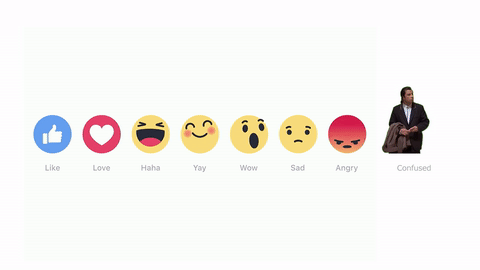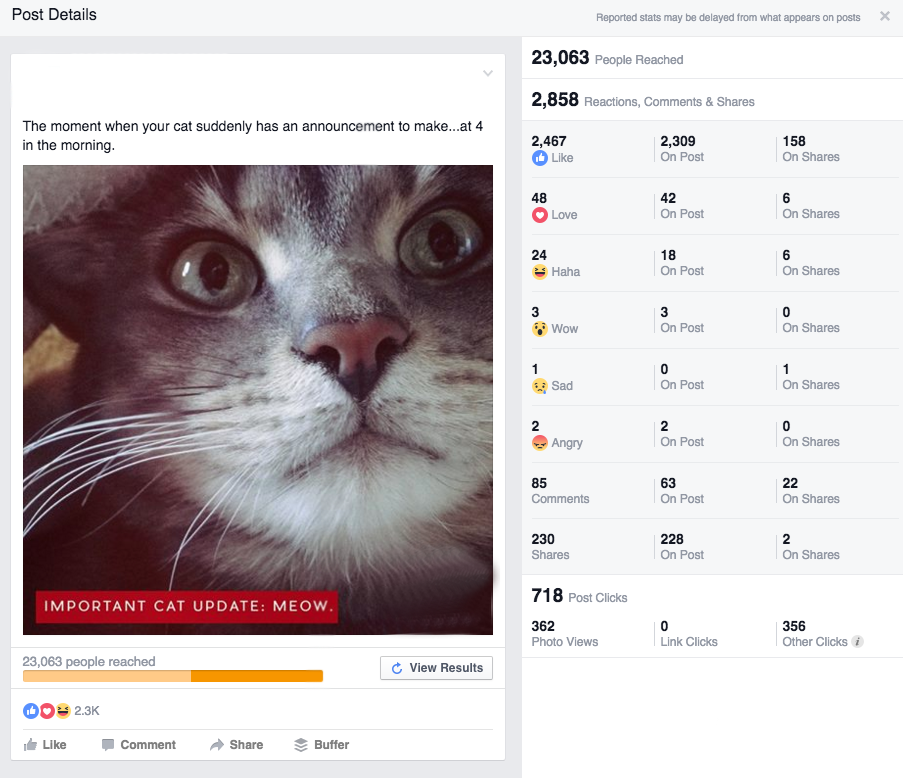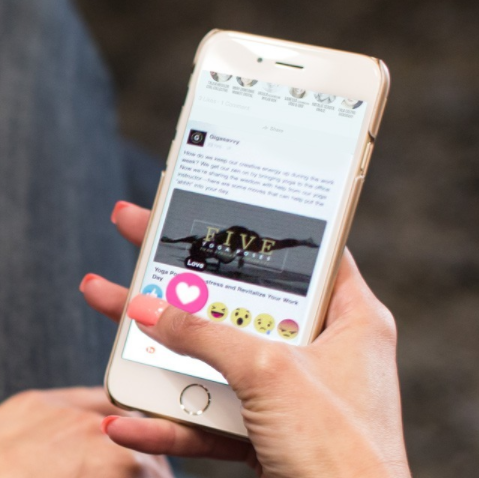The moment you can really express how you feel about someone’s wonderful or offensive Facebook post is here, well, sort of. The whole world is reacting to Facebook’s “Like button reaction” that rolled out last week, which features buttons like “love,” “haha,” “wow,” “sad,” and “angry.” This has no doubt created some buzz, as well as confusion among marketers about what this means for marketing on Facebook.

What does this mean for brands? How will it be measured? And, how can we leverage this new feature? We have taken a dive into the reactions, tested the features, and discussed them to come up with our answers. Take a look.
What Does Facebook Reactions Mean for Engagement?
There will likely be an increase in engagement with the added options to engage.
Some may agree that reaction buttons will increase engagement for brands since there will be more ways to express how they feel about the content they’re viewing. Users who are generally unengaged will be tempted to react to news articles and status updates with the easy to use new featured buttons. This will positively impact the way users react to content, especially if they find the content sad or disappointing since now there are other ways to express themselves other than clicking “like,” which always seemed awkward.
Will Reactions Hurt or Help a Brand?
It can help a brand if you are sharing good content. Negative reactions also don’t penalize your brand.
Marketers may be worried that the onslaught of options for fan reactions to content can create too much freedom to react negatively, and therefore critically impact a brand. Comments aside, if a fan didn’t like something in the past, they just didn’t “like” it. Now if they don’t like what you are sharing there are other options they can use. However, this is actually a good thing—and more often than not it will likely help a brand.
First it is worth noting that negative reactions still count as engagement. Engagement numbers are a total of all reactions, and there is no ding for some of the negative emotions such as “anger” or “sadness.” Most importantly, a negative reaction is not necessarily a disapproval of the brand or content and should not be feared as such. Let’s say you post something that is meant to drive awareness for a moving or poignant story, someone reacting with a “sad” emoji is doing exactly what you intended. One of Gigasavvy’s social clients gives another great example with a recent Facebook post. The post was a cute picture meant to drive engagement, but the subject matter could make someone feel angry. Did those “angry” reactions express anger at the brand? Not in the least.

How Can We Measure Reactions?
Facebook will let you see and measure a breakdown of reactions but everything still counts towards total engagement.
While Facebook is still working on releasing reaction metrics, all reactions are measured as engagement. Currently, you can view a breakdown of reactions on individual posts, giving you more insight of how users are reacting and acknowledging the content, but it has no way of measuring accurate sentiments. Will reaction metrics tell us something about content performance? Possibly, but not the way us marketers would like. If anything, if one focuses on reactions as data, we will be lead to create content that would give us that focused reaction. Just keep in mind that it doesn’t add more value to your content by getting a reaction vs. a “like,” comment, or share—it still falls under engagement.
How Can Marketers Leverage Facebook Reactions?
Use your audience’s reactions to engage in a more meaningful way and gain insights to improve content strategy.
Marketers should continue to focus on the core of social media marketing—targeting relevant audiences, frequency, and good content. Getting a reaction is a bonus. One opportunity you should leverage with this new feature is to use it to engage and respond to customers in a more meaningful way. Instead of just responding to a “like” you now have the opportunity to respond with “What did you find funny?” or “Wow is right!”—the possibilities are endless.
Marketers can also use these new metrics to gain a better understanding of how people react to or feel about each piece of content. What types of content do people “love” the most? Do people share more of what makes them say “wow” or express “sadness?”
So what should marketers keep in mind as we move to a world outside the thumbs up button? To sum it up, these reactions create a new type of marketing that will create different kinds of engagement and more detailed content analysis. However, also keep in mind the engagement totals do not change. Sure, it is great to see all the different reactions and form content around that—but at the end of the day, we should all still measure campaigns based on bigger business objectives and overall return on investment.


